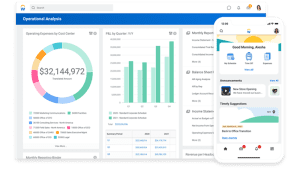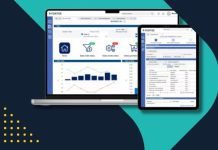
The new generation seeks to address the growing demands on organisations to model ever more complex business scenarios and manage changing business needs. It also makes it easier to expand planning to more users.
“We transitioned from hundreds of manual spreadsheets in favor of a more flexible configuration on Workday Adaptive Planning, effectively eliminating our reliance on datasets that were disconnected from each other, which came with extra costs to administrate,” said Jeremy McCann, Manager of Enterprise Workforce Planning, Boeing. “With the latest EHT innovations, we now feel more confident that we have the processes and visibility required to build the right workforce to execute on our long-term business strategy.”
Elastic Hypercube Technology
Elastic Hypercube Technology is a ‘next-generation’ in-memory engine for planning. Modern organisations, especially large ones, need a planning platform capable of handling large complex models. Without compromising how users interact with the model. In essence, EHT offers a platform which is able to support changing business conditions. While having sufficient power to compute those complex models.
Too often today, software limitations inhibit the ability to do this. Too many calculations, too many complex models. Also with the risk of introducing manual errors produces system inefficiencies, or breaks. Yet a slow and cumbersome planning system also narrows how a business can view itself. Such a constraint can derail efforts to be strategic and forward thinking.
Worse, when each department plans for its own line of business. Those departments will often not ‘talk’ to each other (the silo effect). This reduces the possibilities for productive, cross-organisation collaboration.
The objective of EHT is to address such challenges. As Workday puts it “Elastic Hypercube Technology efficiently calculates complex models and elastically adds memory and compute power when needed to calculate model elements in parallel. That (is) dynamic, automatic scaling. It means (users) can compare as many scenarios as (they) want, at the same time, without sacrificing performance.”
Elastic Hypercube Technology – the next generation
Economic uncertainty, market volatility, and heightened competitive landscape is not reducing. Planning teams are having to derive, analyse and report on massive datasets. At the same time they must assess vast numbers of scenarios. While more dimensionality, new types of data and data sources plus the emergence of artificial intelligence (AI) and machine learning (ML) and a growing number of stakeholders, add still more complexity to planning processes.
In this context, organisations want planning tools which deliver ease of use, speed and scale. Workday claims its enhancements to this new generation of EHT embeds AI and performance improvements. These can efficiently calculate complex models by adding memory and computing power when needed. This produces dynamic, automatic scaling which can:
- involve the most complex multi-dimensional planning requirements
- support high levels of concurrent users
- avoid sacrificing speed or performance
Two brief examples
Two examples (from Workday) of this are Boeing (see also above), which transformed its workforce planning process from being a siloed process to a flexible, consistent, and scalable one. With all its workforce data in one system, Boeing was able to standardise processes and increase visibility into open job requisitions. In turn, this drove cost savings and operational efficiency.
Similarly, Mondelēz International using EHT with Adaptive Planning says it is now working more effectively and is able to make faster, more strategic decisions about the future of its non-production workforce.
“Planning is becoming more complex for large organizations, and with more than 90,000 employees across 82 countries, workforce planning at Mondelēz is no exception,” said Marcel Sakr, Functional Lead, Performance, Rewards & Workforce Planning, Mondelēz International.
“With Workday Adaptive Planning, we’re able to analyze high volumes of data with multiple dimensions and pull detailed reports in seconds versus minutes. The next generation EHT has helped us gain employee-level visibility and simplify our monthly plan-to-actuals variance analysis, saving time and driving faster analysis decision-making.”
Enterprise Times: what does this mean
With enhanced performance, speed and scale, as introduced by Workday with this next generation of EHT, should enable customers to add more users. They will have concurrent access to a cross-organisation platform. The importance of this is the way it opens the door. Combining the growing number of financial, human resource and business users engaged with planning.
According to Workday, it has designed reports, dashboards and sheets to open fast (without performance degradation). It includes rapid handling of very large, multi-dimensional views. Embedded AI in EHT can then anticipate and compute calculations based on past behaviour. It can even inspect any model to identify empty data cells where analysis is not required.
With accelerated data integration, along with faster import and export of large amounts of financial and non-financial data, organisations will work with more complete and accurate models. Best of all, this new generation of EHT is already available to all Workday Adaptive Planning customers.
“For many organizations, the ability to quickly model and understand implications of business decisions and disruptions is more important than ever before,” said Dennis Yen, General Manager of Workday Adaptive Planning, Workday.
“With our continued EHT innovations – including adding to the solution’s existing AI and ML functionality – Workday Adaptive Planning is helping more than 6,000 companies take control and plan proactively for their futures by providing continuous planning, company-wide planning, deeper insights, and the ability to adapt and perform at scale.”

























